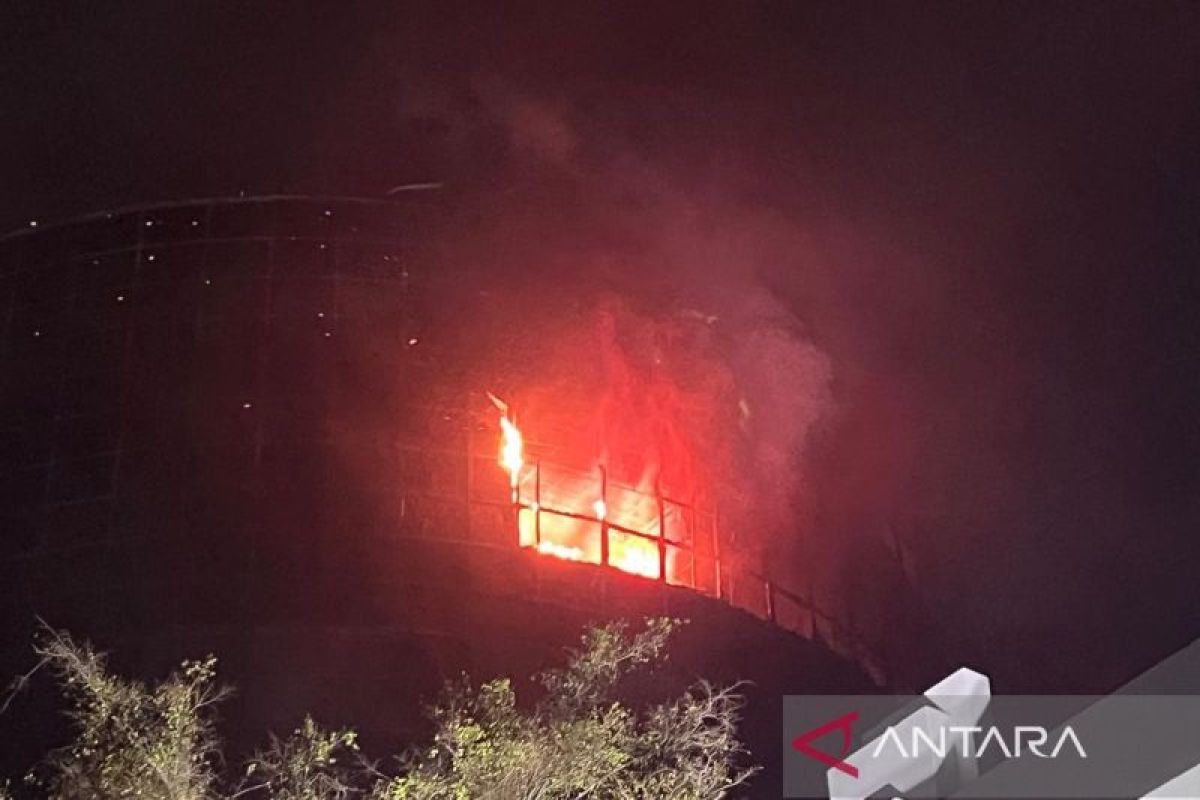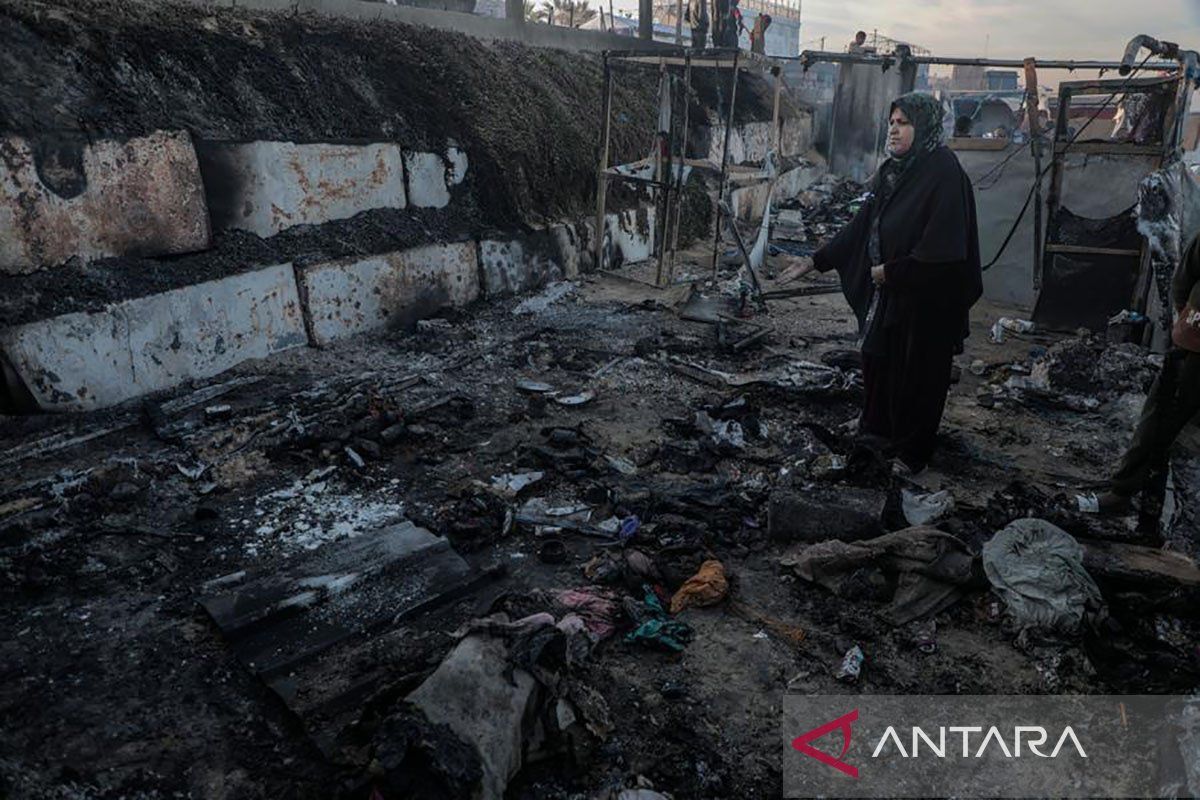Israel Attacks Gaza After Ceasefire Delay, At Least 8 People Killed
Israeli warplanes and artillery struck the northern Gaza Strip shortly after Israel and Hamas missed a ceasefire deadline.

TEMPO.CO, Jakarta - warplanes and artillery struck the northern on Sunday, Jan. 19, 2025, and Palestinian medics said eight people were killed shortly after Israel and Hamas missed a ceasefire deadline. The deal, which was expected to pave the way for an end to the Middle East's most devastating conflict in decades, was reported by .
An Israeli military spokesman said its aircraft and artillery struck "terror targets" in northern and central Gaza, and that the military would continue to strike the strip as long as Hamas did not fulfill its obligations under the ceasefire.
The Palestinian Civil Emergency Service said at least eight people were killed in the Israeli strikes and dozens more were wounded. Medics reported tank shelling of the Zeitoun area of Gaza City. Israeli airstrikes and tank fire also hit the northern town of Beit Hanoun, sending residents who had returned there in anticipation of the ceasefire fleeing.
The truce delay and the latest violence came after Israeli Prime Minister Benjamin Netanyahu asked, an hour before an 8:30 a.m. local time (0830 GMT) deadline, for Hamas to provide the names of three hostages who were to be released on Sunday as part of the deal.
Hamas said it was committed to the ceasefire but had so far been unable to provide a list of hostages for “technical reasons on the ground,” without elaborating.
The ceasefire deal could help end Israel’s genocide in Gaza, which began after the Palestinian militant group Hamas, which controls the tiny coastal territory, attacked Israel on Oct. 7, 2023, killing some 1,139 people, according to Israel.
Israel’s retaliatory offensive devastated the Gaza Strip, killing nearly 47,000 Palestinians, mostly women and children, according to Gaza’s health authorities. The genocide also sparked confrontations across the Middle East between Israel and its arch-foe Iran, which backs Hamas, and Palestinian supporters in countries including Lebanon, Yemen and Syria.
Air raid sirens that sounded in the Sderot area of southern Israel were false alarms, the Israeli military said in a separate statement.
In the southern city of Khan Younis, some celebratory gunfire and cheers were heard at 8:30 a.m. local time when the ceasefire was meant to take effect.
Israeli forces have begun withdrawing from areas in Gaza's Rafah to the Philadelphi corridor along the border between Egypt and Gaza, pro-Hamas media reported early Sunday.
HOSTAGE LIST
Netanyahu's request for a list of the first three hostages, who are to be released within hours of the ceasefire, came an hour before the deadline.
"The prime minister instructed the IDF (Israel Defense Forces) that the ceasefire, which was supposed to come into effect at 8:30 a.m., will not begin until Israel has a list of the abductees to be released that Hamas has promised to provide," his office said on Sunday.
Hamas said the delay was "technical" but the names of the hostages could be released soon.
The three-phase ceasefire agreement follows months of negotiations brokered by Egypt, Qatar and the United States, and comes just ahead of the inauguration of US President-elect Donald Trump on Monday, January 20.
The first phase will last six weeks, during which 33 of the 98 remaining hostages — women, children, men over 50, the sick and the wounded — will be released in exchange for nearly 2,000 Palestinian prisoners and detainees.
They include 737 men, women and teenagers, some of whom are members of militant groups convicted of attacks that have killed dozens of Israelis, as well as hundreds of Palestinians from Gaza held since the start of the war.
The first three are female hostages who are expected to be freed through the Red Cross on Sunday. In exchange for each, 30 Palestinian prisoners held in Israeli jails will be freed.
Under the terms of the deal, Hamas will notify the International Committee of the Red Cross (ICRC) where the meeting point will be inside Gaza, and the ICRC is expected to begin driving to that location to collect the hostages, an official involved in the process told Reuters.
ENDING THE WAR?
After Sunday’s hostage release, lead U.S. negotiator Brett McGurk said the deal called for four more female hostages to be freed after seven days, followed by three more every seven days after that.
U.S. President Joe Biden’s team is working with Trump’s Middle East envoy Steve Witkoff to push the deal through.
As his inauguration approaches, Trump has repeated his demands for a swift deal, repeatedly warning that there will be “hell to pay” if the hostages are not released.
But what happens next in Gaza remains unclear in the absence of a comprehensive deal on its post-war future, which will require billions of dollars and years of work to rebuild.
And while the stated goal of the ceasefire is to end the war altogether, it could easily unravel.
Hamas, which has controlled Gaza for nearly two decades, has held out despite losing its top leadership and thousands of fighters.
Israel has vowed not to allow to return to power and has cleared large swaths inside Gaza, in a move widely seen as a step toward ethnic cleansing of Palestinians in northern Gaza, which would allow its forces to invade the territory.
In , the return of the hostages could ease public anger at Prime Minister Benjamin Netanyahu and his right-wing government over the Oct. 7 security failures that led to one of the deadliest days in the country’s history.
Editor’s Choice:
to get the latest news updates from Tempo on Google News




















